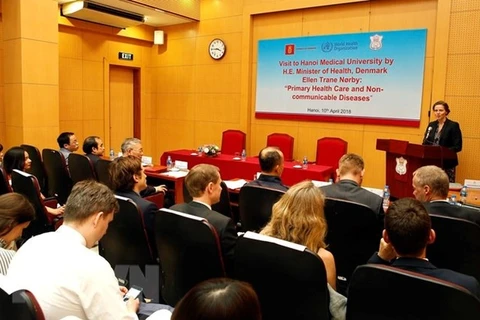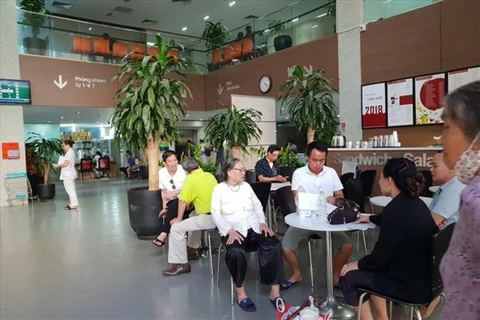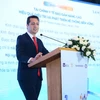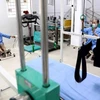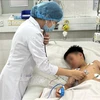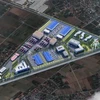Hanoi (VNA) – Early diagnosis, treatment and management of non-communicable diseases like hypertension and diabetes at communal medical stations were updated at a training course workshop for lecturers major in the field held in Hanoi on June 11.
The event, the second of its kind organised by the Ministry of Health in collaboration with the World Health Organisation (WHO), aimed to strengthen health care at the grassroots level, and reduce workload at central hospitals.
According to Deputy Minister of Health Pham Le Tuan, statistics in 2015 showed that in Vietnam, only 43.1 percent of high blood pressure patients were diagnosed and 13.6 percent were treated in medical stations. Meanwhile, 31.1 percent of diabetes patients and 28.9 percent were diagnosed and treated, respectively.
The Health Ministry issued Decision No.2559/QD-BYT dated April 20, 2018 on the management of hypertension and diabetes in line with the family medicine principle at communal health stations for 2018-2020. Accordingly, the organisaiton of training courses for regional lectures in the field is put at the first line of the plan.
However, Tuan said that local authorities and health departments must involve in the model so that it can be carried out in 11,000 communal infirmaries nationwide.
WHO chief representative in Vietnam Kidong Park said that better management of non-communicable diseases must be accompanied with enhancing capacity of hospitals at grassroots level.
High blood pressure and diabetes could be easily diagnosed and treated at grassroots medical stations, which helps prevent the risks of cardiovascular in the country, he added.
Under Resolution No.20-NQ/TW dated October 25, 2017 by the Party Central Committee on the protection, care and improvement of public health in the new situation, 95 percent of medical stations in wards, communes and townships will prevent, manage and treat several non-communicable diseases by 2025 and the rate will reach 100 percent by 2030. -VNA
VNA


